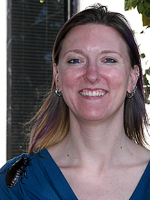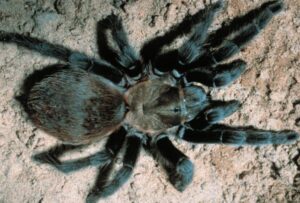Texas Tarantulas Use Hair As Defense
Tarantulas, also known as baboon spiders in Africa or hairy spiders in South America, are the largest spiders in the world. They can be found on every continent except Antarctica. Tarantulas have two body regions, eight legs, and hairy bodies. Tarantulas that are found in North and South America have hairs used in defense. These tarantulas use their legs to flick hairs off their abdomen and into the face of predators. Hairs cause irritation to the eyes and mucous membranes. Tarantulas can be attacked by birds, lizards, snakes, and tarantula hawk wasps.
Nocturnal Predators
Tarantulas are nocturnal predators and feed on insects, other spiders, small lizards, frogs, and snakes. When prey is captured, it is then bitten with the spider’s fangs and injected with venom with digestive enzymes that kills and liquefies the prey. Once prey is soupy, the tarantula sucks up juices through their fangs. While tarantulas are capable of biting humans, their venom does not react with our body chemistry like widow or recluse spiders. Tarantula bites are comparable to a bee sting.
Fifteen Species of Texas Tarantulas
There are fifteen species of tarantulas in Texas and they create burrows in the ground, typically in well-drained soil. They use their webbing to line burrows which helps to shore up tunnels so they do not collapse. Webbing can also be used to create a molting mat which is laid down before the tarantula sheds its exoskeleton as well as used for handling prey. In other parts of the world, tarantulas live in trees and may use webbing to create a sling as a nest. Tarantulas are solitary, so there will only be one tarantula per burrow.
Tarantulas are arthropods, so they have an exoskeleton which requires them to molt numerous times throughout their life to grow. When ready to molt, which is controlled and signaled by hormones that only arthropods have, the tarantula lays down a silken molting mat, flips over on its back, and pops open the old exoskeleton along a weakened area called the ecdysial cleavage line. The spider must push its way out of the old exoskeleton by expanding and contacting its body to help wiggle its way out. Once the spider has emerged from the old exoskeleton, it stays in place on its back until the new exoskeleton hardens and then it will flip back over.
Brake for Tarantulas!
Some in Texas may come across mass “migrations” of tarantulas. These are not true migrations as the tarantulas are not moving to live in a new area, but instead, are males out searching for females for mating.
While tarantulas may be disconcerting for people when they venture indoors, they really are not a pest and don’t warrant control. The best thing to do is to keep tarantulas outside where they belong be excluding the home so the spiders cannot enter.
For more information or help with identification, contact Wizzie Brown, Texas A&M AgriLife Extension Service Program Specialist at 512.854.9600.
This work is supported in part by the Crop Protection and Pest Management, Extension Implementation Program [award no. 2021- 70006-35347/project accession no. 1027036] from the United States Department of Agriculture (USDA) National Institute of Food and Agriculture.
Additional Resources
About Wizzie

Wizzie Brown
County Extension Program Specialist – Integrated Pest Management
Email:EBrown@ag.tamu.edu
Wizzie has been with Texas A&M AgriLife Extension Service since 2002 and has been playing with insects since she was a toddler. She is an Extension Program Specialist with the Integrated Pest Management (IPM) program. Wizzie holds a B.S. in entomology from The Ohio State University and a M.S. in entomology from Texas A&M University. The integrated pest management program provides identification, biological and management information to whomever needs help. Wizzie’s research focuses on imported fire ants, including community wide fire ant management. Wizzie also is happy to provide programs to area groups on a variety of arthropod-related topics. You can find insect and other arthropod information on Wizzie’s blog.

